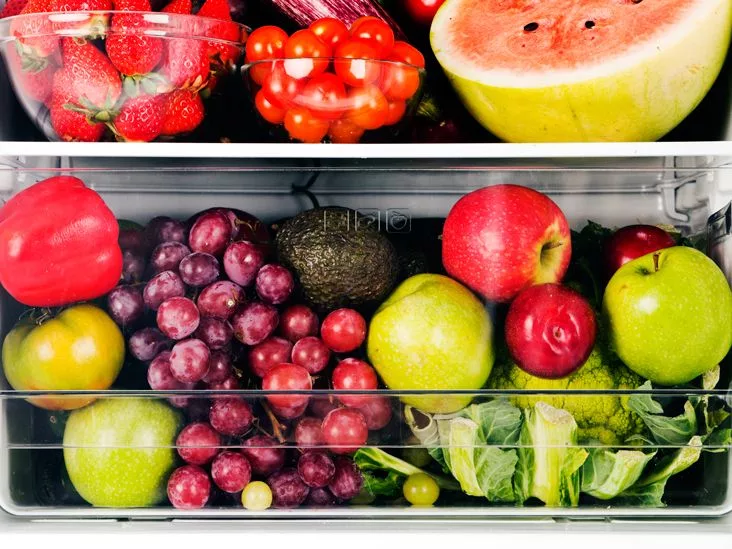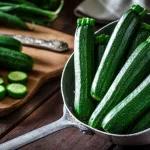Looking for the tastiest, most nutritious foods that are actually at their peak right now? You’ve come to the right spot. Summer seasonal foods are the stars of the garden and the market, delivering bold flavor, extra vitamins, and a lighter carbon footprint. Grab a glass of water, get comfy, and let’s dive into the juicy world of summer produce together.
Why Seasonal Matters
Ever noticed how a tomato from the grocery store often tastes like… nothing? That’s not a coincidence. Once a fruit or vegetable is harvested, the clock starts ticking on its nutrients. Water‑soluble vitamins—especially vitamin C and the B‑vitamins—begin to degrade within days, and the longer they travel, the more flavor fades.
According to a 2023 USDA analysis, fresh, locally‑grown produce can retain up to 30 % more vitamin C than produce that has been shipped across the country. That’s a huge win for your immune system and your taste buds.
Beyond nutrition, buying what’s in season cuts down on transportation emissions, supports local farmers, and usually means lower prices. So when you choose summer seasonal foods, you’re doing a solid for your health, your wallet, and the planet—all at once.
Nutrient‑Rich Produce vs. Off‑Season Imports
Think of a bright orange carrot you pick up at the farmer’s market versus one that’s been stored in a climate‑controlled warehouse for weeks. The fresh carrot still boasts its full complement of beta‑carotene, while the shipped one may have lost a noticeable slice of that antioxidant power.
One study from the University of California found that leafy greens lose up to 20 % of their folate content after just three days of storage. That’s why those crisp lettuce leaves you see on a summer salad look and taste so much better when they’re harvested that very morning.
Environmental & Wallet Benefits
When food travels long distances, trucks and ships burn fossil fuels, releasing CO₂ into the atmosphere. A simple seasonal produce benefits calculator shows that buying locally reduces those emissions by roughly 25 % on average.
And let’s not forget the price tag. During peak season, farmers have a bumper crop, which means they can offer lower prices. That’s why a basket of fresh strawberries in June often costs less than a frozen bag you’ll find in January.
| Produce | Avg. CO₂e (kg per kg) | Local Price (USD) | Imported Price (USD) |
|---|---|---|---|
| Strawberries | 0.23 | 2.30 | 4.20 |
| Tomatoes | 0.18 | 1.80 | 3.00 |
| Blueberries | 0.30 | 3.00 | 5.40 |
Summer Fruit Guide
Let’s start with the sweet side of summer. Below is a quick‑scan summer fruit guide that highlights the best picks for flavor, nutrition, and versatility.
Top 10 Must‑Eat Summer Fruits
- Blueberries – bursting with antioxidants; peak in July‑August (see The Foodies July list).
- Cherries – perfect for snacking; early‑summer jewel that’s rich in anthocyanins.
- Strawberries – sweet, vitamin C‑packed; best from late May to early July.
- Raspberries & Blackberries – tiny flavor explosions, high in fiber.
- Peaches & Nectarines – soft, juicy, and a natural source of potassium.
- Apricots – a little tang, a lot of vitamin A.
- Melons & Watermelon – hydrating, refreshing, perfect for hot days.
- Grapes – great for snacking or making homemade juice.
- Plums & Figs – late‑summer treats loaded with fiber.
- Blue & Red Currants – often overlooked, but fantastic in sauces.
Flavor‑Pairing Quick Tips
Here are a few easy combos that turn simple fruit into a mini‑feast:
- Blueberry‑mint smoothie (blend with Greek yogurt).
- Cherry‑pistachio salad with a drizzle of balsamic glaze.
- Peach‑basil salsa on grilled chicken.
- Watermelon‑feta cubes sprinkled with a pinch of sea salt.
How to Choose the Best Fruit at the Market
Shopping for summer fruits can feel like a treasure hunt. Keep these visual cues in mind:
- Color: Vibrant, deep hues usually signal full ripeness.
- Smell: A sweet, fragrant aroma is a good sign—especially for peaches and melons.
- Texture: Gently press berries; they should be firm yet give a little under pressure.
- Weight: Heavier berries and grapes often mean juicier flesh.
Storage Hacks to Keep Nutrients Intact
Once you’ve brought your bounty home, treat it right to keep those vitamins from waving goodbye:
- Refrigerate: Most berries last 3‑5 days in a breathable container.
- Freezing: Spread berries on a tray, freeze, then transfer to a zip‑lock bag—great for smoothies later.
- Vinegar Wash: A quick dip in a 1 Tbsp vinegar + 1 cup water solution removes surface microbes and helps berries stay plump (advised by Brooklyn Supper). Rinse well afterward.
Summer Veg List
Now, let’s talk veggies—the unsung heroes that turn a simple dish into a colorful, nutrient‑dense masterpiece.
Core Summer Vegetables (Alphabetical Quick‑Scan)
- Arugula
- Basil
- Bell Peppers (sweet & hot)
- Cucumber
- Eggplant
- Green Beans
- Jackfruit (if you’re feeling adventurous)
- Peas
- Rhubarb (last of its season)
- Summer Squash & Zucchini
- Tomatoes
- Yellow Corn
Nutrient Spotlight
| Veg | Key Nutrient | Health Boost |
|---|---|---|
| Tomatoes | Lycopene | Supports heart health |
| Bell Peppers | Vitamin C | Boosts immunity |
| Spinach | Iron | Improves energy |
| Summer Squash | Potassium | Regulates blood pressure |
Cooking vs. Raw – When Heat Helps
Most veggies are perfectly fine raw, but a little heat can unlock hidden nutrients. For example, heating tomatoes increases lycopene availability by up to 30 %—a perfect reason to roast them for pasta sauce.
Conversely, keep bell peppers crunchy and raw if you want to preserve their vitamin C, which is sensitive to heat. The key is balance: a mix of raw salads and lightly cooked sides gives you a broader nutrient spectrum.
Risks & How to Avoid Them
Even the healthiest foods can carry a downside if mishandled:
- Pesticide Residue: Cucumbers often have a waxy coating. Wash under running water with a gentle brush, or soak in a baking‑soda solution (1 tsp per quart of water).
- Mold on Squash: Store whole summer squash in a cool, dry spot, not the fridge, to prevent soft spots that turn moldy.
- Food Safety: Cut fruit or veg should not sit at room temperature longer than two hours—especially in summer heat.
Seasonal Produce Benefits
Putting all these pieces together, let’s see the big picture of why loading your plate with summer seasonal foods is a win‑win.
Health Boosts From a Summer‑Seasonal Plate
When you combine berries, tomatoes, leafy greens, and a handful of nuts, you’re delivering a cocktail of antioxidants, fiber, and essential vitamins. Here’s a snapshot of what you gain:
- Immune Support: Vitamin C from strawberries, bell peppers, and broccoli helps white blood cells function at their best.
- Skin Glow: Lycopene and beta‑carotene (from tomatoes and carrots) fight free radicals that age skin.
- Gut Health: Fiber from raspberries, peas, and zucchini feeds good gut bacteria.
- Heart Health: Potassium-rich corn and watermelon help regulate blood pressure.
Balancing Benefits & Potential Drawbacks
It’s easy to get carried away with sweet fruit, especially when the sun is shining. Too much fruit sugar can spike blood glucose for some people. Pair fruit with protein (a handful of almonds) or healthy fat (a dollop of Greek yogurt) to smooth out the sugar release.
And remember, heat can be a double‑edged sword. While a blistering July day makes a cold watermelon irresistible, that same heat can cause foodborne illness if foods are left out too long. Keep perishables chilled or eat them within two hours.
Practical Tips: From Farm to Table
Now that you know the “why,” here’s the “how.” Follow these simple steps to make the most of summer’s bounty.
Shopping Smart – Farmers‑Market Checklist
- Bring a reusable bag and a small cooler bag for temperature‑sensitive items.
- Ask vendors about the harvest date; the fresher, the better.
- Prioritize items that are in peak season according to the July guide from AskTheFoodGeek.
- Look for “local” labels—these usually mean the produce traveled fewer than 100 miles.
Home Garden Hacks
If you’ve got a balcony or a small backyard, try planting these easy summer champions:
- Basil: Only needs a sunny windowsill; harvest leaves before the plant flowers for the best flavor.
- Cherry Tomatoes: Use a stake as they grow; a single plant can yield 15 lb of fruit in July.
- Zucchini: One or two plants can produce a spare summer’s worth of squash.
I remember the mania of my first summer garden—zucchini vines practically took over the whole plot! The takeaway? Give them room to sprawl, and you’ll be rewarded with endless “zoodles” for pasta night.
Batch‑Prep & Preservation
Summer produces a surplus, so a little foresight saves waste:
- Freeze Berries: Spread on a tray, freeze, then store in zip‑lock bags for smoothies.
- Roast Tomatoes: Toss with olive oil, herbs, and roast for a week‑long sauce base.
- Quick Pickles: Slice cucumbers, add vinegar, sugar, salt, and a pinch of dill. Ready in 24 hours.
Quick Reference Tables
Summer Fruit Nutrient Snapshot
| Fruit | Vitamin C (mg/100 g) | Fiber (g) | Peak Month |
|---|---|---|---|
| Strawberries | 59 | 2.0 | June‑July |
| Blueberries | 10 | 2.4 | July‑August |
| Peaches | 6 | 1.5 | July‑August |
| Watermelon | 8 | 0.4 | July‑August |
| Grapes | 4 | 0.9 | August |
Veggie Heat‑Stability Chart
| Veg | Best Cooked | Raw Benefits |
|---|---|---|
| Tomato | Roasted (lycopene ↑) | Fresh (vit C) |
| Bell Pepper | Grilled (sweetness) | Crunchy (vit C) |
| Zucchini | Sautéed (water retention) | Spiralized (fiber) |
| Spinach | Lightly wilted (iron absorption) | Raw in salads (folate) |
Conclusion
Summer seasonal foods aren’t just a culinary trend—they’re a passport to brighter flavor, higher nutrition, and a kinder planet. By choosing what’s ripe right now, you get more vitamin C, better antioxidants, and a lighter grocery bill. Whether you’re strolling through a farmer’s market, snipping basil from a balcony pot, or freezing a handful of blueberries for tomorrow’s smoothie, you’re making a choice that benefits your body and your community.
So, what’s the first summer fruit or veggie you’ll add to your plate today? Grab a ripe peach, toss some cucumber into a salad, or roast a tray of tomatoes for a quick sauce. Share your favorite summer recipes in the comments—you’re not just reading, you’re joining a tasty conversation.
If you have questions, need a recipe tweak, or just want to gush about that perfect watermelon slice, drop a line below. Let’s keep the summer bounty rolling!


















Leave a Reply
You must be logged in to post a comment.